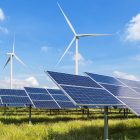
If you’re thinking of switching energy providers or you have already been a part of a New York electricity provider for an extended period of time, you could be thinking about how you can go about it. The New York energy market is not regulated. This means that consumers can choose a new provider. There are many options to lower your energy bill or switch to renewable energy sources. You can compare rates by using an online tool such as ElectricRate. Or, you can visit the site of the provider for more information about their plan.
The New York Electricity Providers market has changed a lot in recent years as more and larger businesses have begun to adopt clean energy sources. The renewable energy sources in New York have expanded to include solar and wind. In fact, a lot of New York utilities have begun to convert their power plants to clean sources, which means that fewer New Yorkers will depend on dirty fossil fuels.
The New York State Clean Energy Standard stipulates that 70% of electricity generated in the state come from renewable sources by 2030 and that all electricity produced in the state is carbon-free by 2040. At present, 30% comes from renewable resources and 30% from hydroelectric.
New York has been known for its long history as an a state that is a push-pull. The downstate and the upstate regions have always been in a relationship of mutual dependence. For instance, the majority of the state’s population is in a small area located in the southeast region of the state. This region is dependent on a maze of transmission lines to provide power to residents. The region’s extreme weather particularly during summer months, can affect the effectiveness of power plants.

New York is leading the clean energy revolution. Many utilities are beginning to convert their power plants into green energy sources. The remaining power is powered by a large hydropower plant located near Niagara Falls. The majority of New York’s green energy production comes from hydroelectric, with the rest coming from wind and solar.
Since 2003, the energy market has been unregulated. This provides residents with a wide variety of energy rates. New York’s Independent System Operator (ISO) is responsible for ensuring that the grid of the state is properly maintained and operates at peak capacity. The Long Island Power Authority (LIPA), the second largest municipal utility in the nation is a private, non-profit power provider that manages retail electric distribution systems within the Long Island region.
New York is not only one of the most populous states, but also has some of highest energy rates in the nation. The average rate in New York is 35 percent more than that of the national average. New York’s average electricity rate is 24 cents per Kilowatt-hour.




